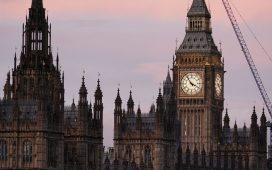
Every election in Britain sparks arguments about our first-past-the-post voting system.
Critics of the current method say it’s vastly unfair and overwhelmingly favours the two big, established parties – Labour and the Conservatives.
Smaller parties tend to come second in a lot of constituencies but fail to win a single seat because they don’t come first anywhere.
This means a party can potentially rack up millions of votes without ever gaining a single seat.
Yesterday the Green Party got 864,743 but this only led to one MP.
And in 2015 UKIP got 3,881,129 votes without winning a single seat – compared to the SNP’s 56 seats from 1,454,436 votes.
The headlines this morning would be very different if we had proportional representation, according to analysis from Wales Online .
Use our interactive graphic here to see how a proportional representation House of Commons compares to today’s reality…
If we had proportional representation, today’s House of Commons would have…
- No overall majority for any party;
- The Conservatives with 75 seats fewer;
- The Greens would go from one seat to 17;
- The amount of SNP seats would half;
- A government could only be formed if parties worked together;
- The Brexit Party would win 13 seats.














